Choosing the right guitar might seem like a simple task until you actually start looking at all the different specs. Of course, your choice will depend on what kind of sound you are looking for and what genre of music you are playing. Some guitar will lend themselves better to rock, blues, or jazz. One of the most important parameters you need to look at when shopping for a guitar, and especially an acoustic guitar, is its size. In this context, size does make all the difference. How so?
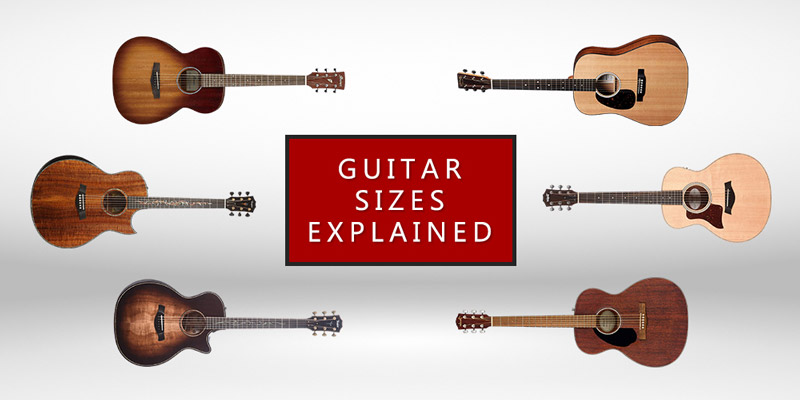
Well, guitar size affects not only playability but the tone as well. For example, younger players, as well as children, are going to be more comfortable playing a smaller guitar. Also, travel guitars are not only easy to play, but a breeze to carry around as well. On the other hand, body size makes a huge difference in sound, with bigger guitars producing a tone that is large, resonant, and booming. However, all this talk about guitar sizes gets even more complicated, because size can refer not only to body size and shape but also to body and scale length.
In order to clear the confusion and help you choose the right guitar for yourself, let’s take a closer look at everything you need to know about guitar sizes. We’ll cover the different acoustic guitar sizes and how the size of an electric guitar is measured. Keep on reading.
Table of Contents
- Here Are the Different Acoustic Guitar Sizes
How Do You Measure a Guitar’s Size?
There are several different ways in which you can measure a guitar. Usually, when measuring an object of any kind, we talk about length. However, in the case of guitars, measuring its length from end to end might not be all that relevant. Why? Well, take electric guitars for example. Since guitar pickups are responsible for producing the sound, and because electric guitars are solid (although they can be hollow and semi-hollow), guitar body shape, depth, and length don’t play as big of a role as they do on acoustic guitars. Also, some guitars have larger headstocks, and their effect is purely aesthetic. Also, there are headless guitars, which don’t have a headstock and are shorter than regular guitars by default.
So, measuring the entire length of the guitar is not an accurate way to measure a guitar in terms of size. However, you can compare guitars, both acoustic and electric, based on scale length, which is a lot more relevant. You can also measure and compare them based on the shape and size of their bodies, which is the most common classification. This is also probably the most relevant way to compare and analyze guitars since it’s the size and shape of their bodies that play a crucial role in sound production and tonal qualities. With that in mind, let’s take a look at guitar body sizes and shapes first.
Here Are the Different Acoustic Guitar Sizes
We will focus on acoustic guitars here because the size and the shape of their bodies directly affect their sound. As for electric guitars, as we have said before, they produce sound with the help of pickups, and since they are usually solid, body size does not play a significant role. Yes, we are aware of the perpetual debate about how different tonewoods sound different, even on electric guitars, but that is a topic for another article. Although the most common guitar size is the dreadnought, there are plenty of others which you have probably already seen but haven’t realized that they are different from the dreadnought or the classical guitar. So, let’s begin by taking a look at each.
Jumbo Guitar
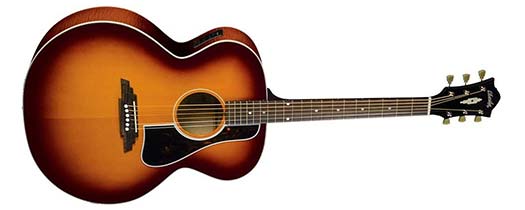
Finally, we come to the largest guitar shape of them all: the jumbo. They are not just big in terms of size, but as it is expected, in terms of sound as well. This is due to the massive body which has a very large lower bout width of 17”. The jumbo’s secret is its defined waist, without which the sound would be too muffled and muddy. It is that waist that gives it that signature snap. Needless to say, jumbo guitars have an amazing bass response too. Because the soundboard is so huge, it requires you to put in a lot of energy in your playing in order to make it resonate properly and makes the most of what it has to offer.
Jumbo guitars were introduced during the late 1930s because musicians wanted acoustic guitars that could compete with other instruments inside the band and not get lost in the mix. Because jumbo bodies are so big and deep, they are not recommended for children or petite adults, which would find it very difficult to play. Needless to say, jumbo guitars are suitable for just about any genre that requires a big, bold sound, which means rock, pop, blues, country, and bluegrass.
Grand Orchestra Guitar
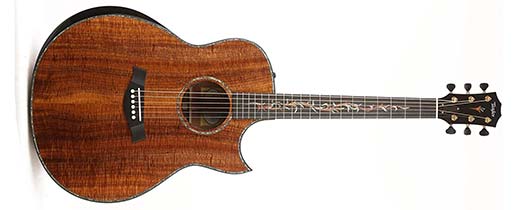
This is the largest guitar shape by Taylor, which means it’s even larger than the GS. If you’ve got a heavy attack and like to play hard, then this shape will be right up your alley, since it shares a lot of similarities with the dreadnought. However, whereas dreadnoughts come at different price points, GO guitars are high-end, and therefore very expensive. They are very loud, but they have great dynamics, which means they can go from quiet to loud and vice versa in a split second. Just like the dreadnought, this guitar shape has a great bass response, and the tone it produces is very rich and complex, thanks to the lower bout, which is 16 ¾” wide.
However, unlike the dreadnought, grand orchestra guitar also performs really well if you don’t have a very heavy attack. Why? Well, despite the soundboard of the GO being so big, it is braced in such a way which allows it to resonate even with a lighter touch. As for the volume ceiling, it is very high, so there will be no distortion of the sound even if you are very heavy-handed with your acoustic guitar.
Dreadnought Guitar
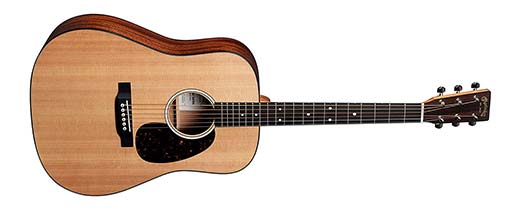
Finally, we come to the most popular guitar sizes/shapes of them all: the dreadnought. You would be hard-pressed to find a manufacturer or a luthier that doesn’t make one of these, and there is also a huge selection of them. You can find them dirt cheap, as well as pay thousands of dollars for high-end models. In comparison to all of the previous guitar shapes on this list, the dreadnought has the largest and the deepest body, with a wider waist and an upper that is proportionately narrower. This enables them to have that signature huge sound that has it all: deep bass, strong mid-tones, and bright treble notes.
Because the sound is free to resonate inside that big body, dreadnought acoustic guitars are also very loud, which means you can use them for loud strumming, as well as inside an environment where your acoustic guitar needs to compete with other instruments or vocalists. These guitars are also incredibly versatile, and you can pretty much use them for any genre, ranging from rock, blues, and punk, to folk, bluegrass, and country. Regardless of whether you are strumming loud chords or playing single notes, dreadnought guitar will always have a full, resonant sound.
One thing you need to keep in mind though because the soundboard is so big, you need to play the dreadnought a bit harder than other types of guitar in order to get the soundboard to really resonate. And another reason why you should play them hard is that they have a really high volume ceiling, which means there is no sound distortion, no matter how loud your playing is. Dreadnought guitars also have great sustain, and when you combine this with loud strumming, these sustained notes combine with the notes or chords you are playing, you get overtones, which makes the sound really full and rich.
The downside of the dreadnought is its biggest advantage: size. Because its body is so big and wide, it can be difficult for children and petite adults to play this guitar shape, since it’s less comfortable and requires you to put in more effort, especially when strumming. Martin dreadnought names always start with a “D”. Dreadnoughts are large guitars, and most have a longer scale. The only exceptions are slope shoulder or round-shouldered dreadnoughts, which have a shorter scale. Since we have mentioned Martin, we need to point out that they were also the originators of the shape itself. The name comes from an old English ship.
Grand Symphony Guitar
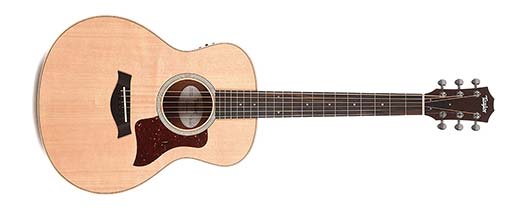
This particular shape was introduced back in 2006 by Taylor, and it has been pretty successful so far. In terms of shape, it’s pretty close to the grand auditorium guitar. However, GS guitars have a slightly wider lower bout, which makes all the difference when it comes to sound. These guitars have a better bass response and a slightly warmer high end. Also, they have a higher volume ceiling, which brings them even closer to dreadnoughts. Just like GA guitars, grand symphony guitars are extremely versatile and be used in any setting, for any genre or playing style.
Grand Auditorium Guitar
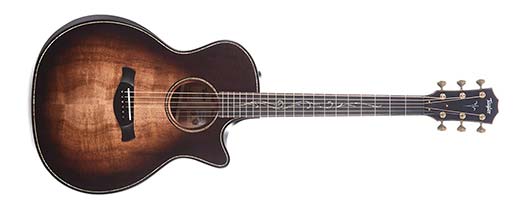
Grand auditorium guitars, also known as “0000” or M guitar size, represent the second most popular acoustic guitar shape/size, right after the dreadnought. As for the shape itself, it is very similar to the previous type, with subtle differences between different models and manufacturers. As for the size, these guitars rival the dreadnought and can even be larger in some cases. They also have the same body and lower bout width, but with a narrower waist. However, unlike the previous shapes, the grand auditorium guitars don’t have a compressed sound with little or no bass.
They sound just as loud and booming as the dreadnought, but they are also great for fingerpicking. Overall, they have a very balanced sound that is a great fit for just about any genre, which is why so many professional touring musicians opt for this particular shape in a live setting. They don’t have to transport multiple acoustic guitars, they can just use their grand auditorium guitar to handle it all. This guitar size has really put Taylor guitars in the spotlight, and they have countless high-quality GA guitars in their lineup. These guitars belong in the category of large guitars, which are the loudest and have the widest dynamic range.
Auditorium Guitar
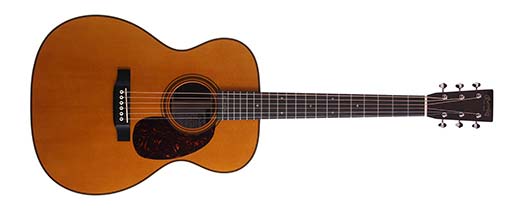
Auditorium guitars can also be found under the “000” name, in the case of Martin guitars, as well as their Grand Performance series. They are bigger when compared to their Grand Concert counterparts. In comparison to the dreadnought, auditorium guitars have a narrower and thinner body, as well as a more pronounced waist. All of this results in a guitar that is easier and more comfortable to play, since you don’t need to reach around it as much, and it’s closer to you when you strum. It doesn’t have the same low end as the dreadnought due to the thinner body, but it does have an outstanding midrange. Another thing that’s interesting about auditorium or 000 guitars is that they have a shorter scale, whereas the guitars with the same body, but longer scale are labeled as OM guitars. Auditorium guitars belong to the category of medium-sized guitars.
Grand Concert Guitar
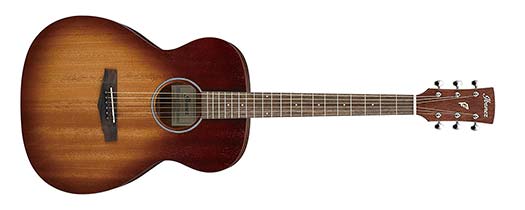
Grand concert guitars are very popular, and you will often find this size labeled as “00” in the case of Martin guitars. As you have probably expected, grand concert guitars are larger than concert guitars, and as a result, they are also louder and more resonant. In fact, they project so well that they are louder than some of the larger body sizes, such as the dreadnought, when played with your fingers or when strummed gently. Of course, once you start playing them harder, they will be as loud as their lower volume ceiling allows them to be. Most grand concerts are usually available with 12 or 14 neck frets. In terms of size, grand concert guitars belong to the category of smaller body guitars.
Concert Guitar
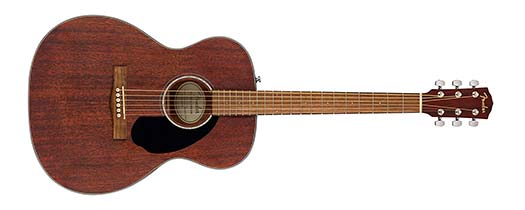
Concert guitars are also labeled as size “0” according to Martin’s nomenclature. What sets them apart is their lower bout width, that is usually around 13”. At first glance, a concert guitar looks a lot like a classical guitar, but it has a slightly wider lower bout, as well as steel strings, which give a sharp, louder sound. Because of the smaller body, they have less bass, but more midrange. One of their characteristics is the narrow waist, especially when compared to that of dreadnought guitar. Concert guitars are also less loud than any of the larger guitars, which means they are best suited for gentle fingerpicking and studio work than strumming. Also ideal for players of smaller stature.
Parlor Guitar
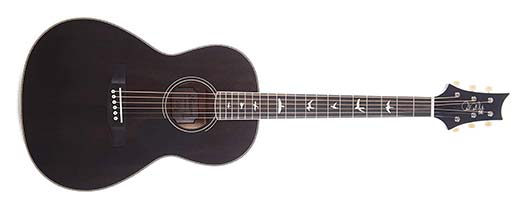
Before going into more detail about parlor guitars, we want to make it clear that these are not the same. They can be distinguished from one another based on a number of details, with the first one being body shape and length. Parlor guitars have elongated bodies, which are also thinner than those found on travel guitars. The next key difference is the nut width since travel guitars have a smaller nut width in comparison to standard acoustics guitars. Finally, travel guitars have more frets than parlor guitars. The fret count on parlor guitars usually stops at 18, with 12 of those being neck frets.
Parlor guitars have gotten their name because they were played inside the parlor rooms of wealthy homes. They were introduced in the 18th century, and their popularity has reached its peak at the end of the 19th century. Recently, however, they have become increasingly popular among folk players, mainly because of their unique, warm sound. Although there are slight variations in terms of certain proportions and measurements, most parlor guitars are based on Martin’s “0” size. Parlor guitars usually have a narrow lower bout, which results in a very prominent midrange with plenty of natural compression.
Classical Guitar
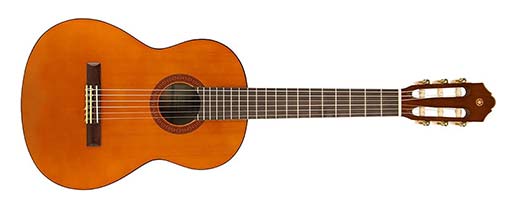
Classical guitar, which is also known as Spanish guitar, is mainly used by players who prefer classical music. Although classical guitars have a similar scale length as acoustics, the sound they produce is softer and warmer when compared to acoustic guitars. Also, the main difference between the two is in the strings, since classical guitar uses nylon strings instead of steel ones. In terms of size, they are larger than all of the mini-guitars we have looked at so far but smaller than dreadnought and concert guitars, but they are available in a variety of other, smaller sizes.
For instance, you can buy them in ¾, ½, and ¼-size versions, which are suitable for children. They are also a good option for beginners who aren’t sure if they want to get serious about guitar since they are cheaper than full-size classical guitars. On the other hand, high-end full-size classical guitars can get pretty pricey, especially if they are hand-made by reputable luthiers.
Travel Guitar
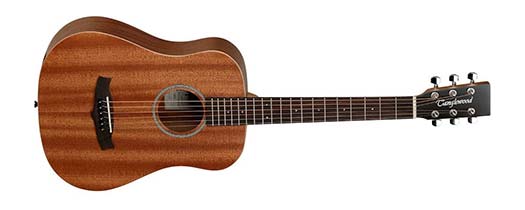
Travel guitars are ideal if you don’t like to lug around a heavy guitar since they weigh no more than three pounds in most cases. As in the case of other smaller guitars, they have a sound which is thinner than that of standard guitars, which is the price you pay for convenience. Since these guitars are roughly the same size as ¾-size guitars, what is the difference between the two then? Aren’t they the same? No, because most ¾-size guitars have a shorter scale than travel guitars, whose scale length is identical to that of regular acoustic guitars. If you want a guitar that is easy to carry around and you don’t need a loud, booming sound, then a travel guitar might just be the right choice for you.
Popular Related Article: Common Types of Acoustic Guitars
Three Quarter-Size Guitar
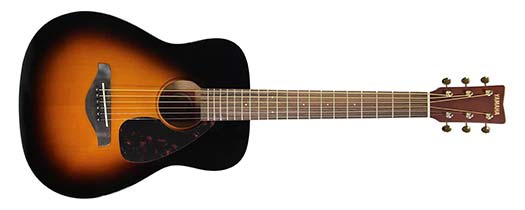
Next up are the ¾-size guitars which are not only ideal for older children but smaller adults as well. In fact, a lot of acoustic and electric guitars come in this size. But, as we have pointed out before, body size doesn’t play that big of a role in solid-body electric guitars. Scale length, on the other hand, does make a difference in sound. Obviously, ¾-size acoustic guitars aren’t going to have the same low end as regular guitars, and their tone is going to be more treble-heavy. They are great travel guitars.
Half-Size Guitar
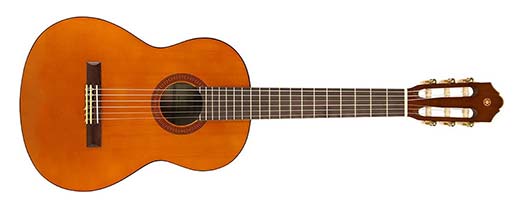
Half-size guitars and ¾-size guitars are classified as mini guitars, and unlike ukulele and guitarlele, they are actual guitars. This is mainly because even the smaller of the two, the half-size, can be tuned to a standard guitar tuning. Due to its dimensions, it’s perfect for small children which are looking to learn how to play the guitar. However, once they are 8 years old, they should really switch to a ¾-size guitar or a normal one.
Guitarlele
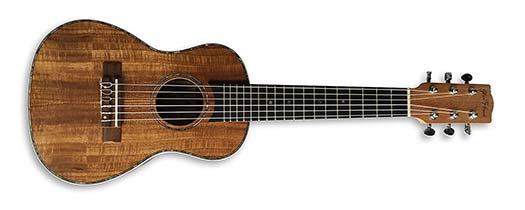
Just like its name indicates, the guitarlele is almost a combo of the ukulele and the guitar. Also known as Kiku, the guitar is somewhat larger than the ukulele, and it has six strings, just like your regular guitar. Because a guitarlele has six strings, it can be played just like your normal guitar, using the exact same chord shapes. However, keep in mind that these are tuned in a higher key. To give you a better idea, simply put a capo on the fifth fret of the guitar, and you will get a standard tuning for your guitarlele.
If you need all six strings, this is the smallest guitar form factor you can find. It’s more versatile than the ukulele, but because it’s still pretty small, it provides pretty much the same convenience, so you can take it with just like you would a ukulele.
Popular Related Article: The Different Guitar Neck Shapes
Ukulele
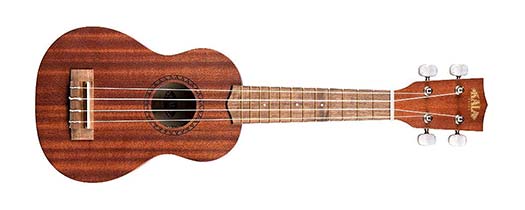
Although not technically a guitar, the ukulele shares so many elements with regular guitars, that we think of it as one. The biggest difference between a guitar and a ukulele is in the size of their bodies, as well as the fact that the ukulele has only four strings, whereas acoustic guitars usually have six or 12 strings. Because of their compact form, ukuleles are ideal for those who would like to play guitar, but find them too cumbersome or uncomfortable, as well as those who like to play Hawaiin music or simply like the ukulele for what it is. It’s also ideal for traveling and can fit inside anyone’s luggage.
Keep in mind that the ukulele has a very specific sound, which means it’s not as versatile as a regular acoustic guitar. First of all, because their body is small, they produce a sound that is very treble-heavy, with the low end being almost non-existent. Also, because their necks are shorter, they have different scale lengths, and they have to be tuned differently. However, they can be very useful if you want to just play for fun or learn the basics of the guitar and other stringed instruments that are played with a pick or your fingers.
Scale Lengths
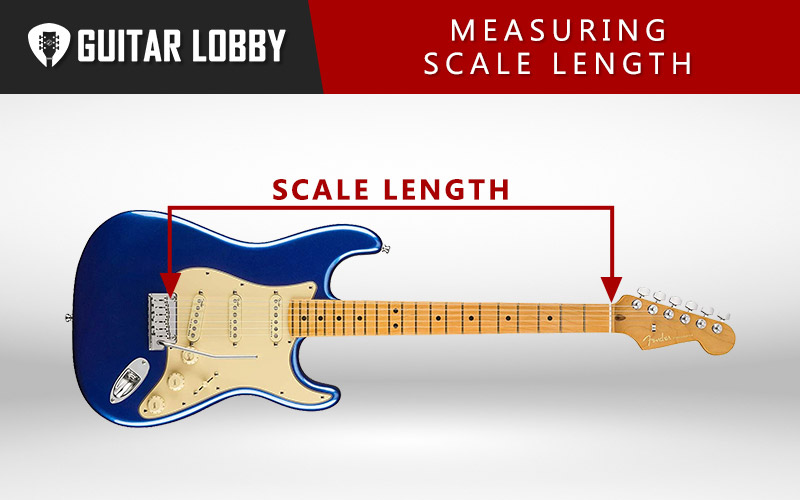
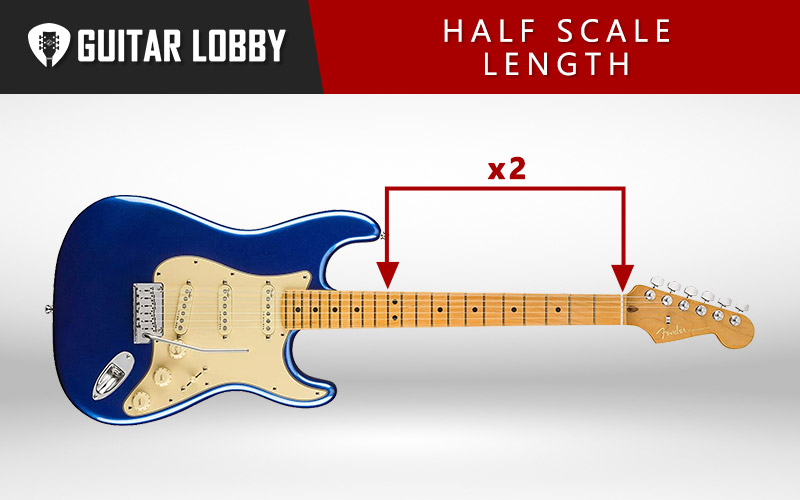
And now we’ve to the second most important element of any conversation involving guitar sizes, scale length. What is scale length? Simply, it is the distance between the nut and the bridge of the guitar. Since there is almost an endless number of different guitar models, it’s hard to list all the existing scale lengths, so will focus on some of the most common ones:
- 24” – found on offset guitars such as Fender Jaguar and Fender Mustang
- 24.5” – found mostly on PRS guitars from Santana Signature series
- 24.75” – found on most Gibson and Epiphone guitars
- 25” – found on most PRS and Danelectro guitars
- 25.5” – found on Fender guitars, Superstrats, as well as most Jackson, Ibanez, Squier, Kramer, and Steinberger guitars
- 26.5” – found on most seven-string guitars made by Schecter, Ibanez, and Jackson
- 27-30” – found on baritone guitars, as well as those which have eight or nine strings
- 34” – found on bass guitars
The common scales are obviously the 25.5” scale, which can be found on Fender Stratocasters and Telecasters, and the 24.75” scale, which is found on Gibson and Epiphone guitars. There is no standard scale that is used by all guitar manufacturers.
How is Guitar Scale Length Measured?
While we have explained that scale length is the distance between the nut and the bridge of the guitar, that is usually not the way to measure scale length, because you would always get inconsistent results. How so? Well, if you were to take a closer look at the guitar, especially an electric one, you would be able to see that every string starts at a different distance relative to the nut, which means there is no single measurement that can tell you the exact scale length. Scale length is actually measured by measuring the distance from the nut to the 12th fret of the guitar and then doubling the measurement. For example, the distance between the nut of the Fender Stratocaster and its 12th fret is 12.75”, which half of its signature scale length of 25.5”.
Now, let’s take a look at how scale length affects the sound and playability of the guitar by analyzing parameters such as string tension, action, fret spacing, and string gauge.
String Tension
Scale length directly affects string tension because the longer the scale on your guitar, the higher the tension on the strings needs to be in order to get it up to the correct pitch. If you have a guitar with a shorter scale, less tension will be needed in order to get the string up to the correct pitch. Pretty simple, but string tension, in turn, affects playability. If you were to compare a Fender Stratocaster and Gibson Les Paul, which have different scale lengths, you would notice right away that it’s easier to do bends on a Les Paul and that there is less tension on the strings when you strum.
This is because a Les Paul has a shorter scale. The difference in tension would be even more pronounced if you were to switch from a Les Paul to baritone guitar in standard tuning which has a scale length of 27”. Obviously, with that much tension on the strings, it’s very difficult to bend the string. So does that mean you’re stuck if you have a guitar with a longer scale? Fortunately, that is not the case, because you can fix that issue by using a different string gauge.
String Gauge
So, let’s say that you have a baritone guitar, and it’s hard for you to do bends or that the strings feel too tight when you strum. You can easily fix this by option lighter gauge strings, which decrease the tension on the string. This means that, given the right string gauge, you can play a baritone guitar which has the same tension as a Les Paul. This also goes both ways, because if you want to play metal, for example, and you want to turn your guitar really low, your string might become too slack. You would fix this by switching to heavier gauge strings, which would increase the tension.
String Action
String action is the space between the frets and the strings. The higher the action, the bigger the space. When there is low tension on the strings, they need more room to vibrate, and where there is not enough room, you get string buzz. If you want to tune your guitar really low, strings will become slack, and they will buzz a lot. So, in order to reduce buzz and keep the low tuning, you need to either have a longer scale or switch to heavier gauge strings. It’s as simple as that.
Fret Spacing
With different scale lengths, you also get different fret spacing, which completely changes the feel, and for some players, the playability of the guitar. For example, Fender Jaguar has a really short scale of 24”, which means its frets are closer together. However, if you were to play a baritone guitar with a 27” scale length, you would quickly realize that the frets on it are spaced further apart. Depending on how big or small your hands are, you will find either that the shorter or longer scale feels more comfortable for you.
And there you have it, everything you need to know about guitar size and scale length. Once you know all of this, your choice of guitar will be a lot easier. Ultimately, a lot of it depends on what kind of playing style you have, as well as which genre of music you prefer. Good luck!

My name is Chris and I’ve had a passion for music and guitars for as long as I can remember. I started this website with some of my friends who are musicians, music teachers, gear heads, and music enthusiasts so we could provide high-quality guitar and music-related content.
I’ve been playing guitar since I was 13 years old and am an avid collector. Amps, pedals, guitars, bass, drums, microphones, studio, and recording gear, I love it all.
I was born and raised in Western Pennsylvania. My background is in Electrical Engineering, earning a Bachelor’s degree from Youngstown State University. With my engineering experience, I’ve developed as a designer of guitar amplifiers and effects. A true passion of mine, I’ve designed, built, and repaired a wide range of guitar amps and electronics. Here at the Guitar Lobby, our aim is to share our passion for Music and gear with the rest of the music community.
